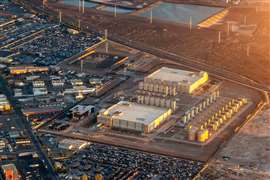Harsh winter hits US construction
02 February 2011
Seasonally adjusted construction spending in the US took a dip in December to US$ 788 billion, -2.5% less than the rolling to total to the end of November and -6.4% lower than the figure for December 2009. Figures from the US Census Bureau said the value of construction in 2010 was US$ 814 billion - a -10.3% decline on the figure of US$ 908 billion for 2009.
Commenting on the figures, Associated General Contractors of America (AGC) chief economist Ken Simonson said, "These dismal results - coming just days after another government agency reported the overall economy grew for the sixth quarter in a row - show that the agony of the recession continues for millions for millions of construction workers and their firms. Construction spending fell again in the last two months of 2010, and the preliminary total for the year was the lowest since 2000."
Economic forecasting company IHS Global Insight added that the downturn at the end of the year was due in part to unusually bad weather for the time of the year. "December 2010 was one of the coldest Decembers on record in the South, one of the wettest in the West and one of the snowiest in the Northeast and Midwest," the company said.
There were only a few bright spots in the figures, the most notable of which was the power sector, where construction spending finished the year +13% higher than in December 2009 at US$ 83.5 billion). However, non-residential construction as a whole was down -13.9% over the course of the year, with the lodging, office, commercial and manufacturing sectors hit particularly hard.
In contrast, the residential construction sector was down just -1.0% compared to a year ago, at US$ 251 billion.
Commenting on the outlook for the next 12 months, Mr Simonosn said, "The outlook for 2011 is very mixed. Spending on rental housing, warehouses, hospitals and factories should pick up. Power construction should stay strong, and federal dollars for stimulus and base realignment projects will continue to sustain some contractors. But public school construction and other state and local projects will keep shrinking, while single-family homebuilding, retail and office construction are likely to remain feeble."





